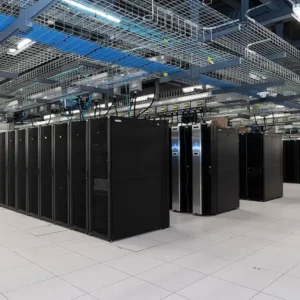Data has long since replaced instinct and cunning for determining an organization’s growth and trajectory. There’s too much of it and from too many diverse sources to make sense of everything through traditional storage means. Data lakes embrace the data-driven digital world’s chaotic nature and help their owners glean insights that let them stay ahead of the game.
What are data lakes, and why are they indispensable? Dive in with us and emerge with new insights!
Data Lakes Demystified
Data lakes are centralized repositories that store large amounts of data in different formats and structure levels. They’re not as organized and stringent as data warehouses. However, they’re more suitable for modern analysis challenges due to better scalability, flexibility, and accessibility.
Think of data as water. Storing it in a warehouse requires lots of preparation. The water needs filtration and occupies clearly labeled containers. The warehouse owners also know who will use the water and for what purposes.
Meanwhile, the water inside a lake is in its natural state. It might have gotten there from multiple streams and springs, yet anyone can sip from or dive into it. Such a lake has the potential to hold secrets the right fishing lure or diving expedition may uncover.
Here are the key features, advantages, and challenges that come with using data lakes. They:
1. Store Data Regardless of Structure
Data lakes can store any and all data a business produces. Everything is fair game, from raw and unstructured sources like IoT sensory data, social media posts, and multimedia files to highly structured data originating from CRM and ERP platforms.
Rather than rely on traditional file and folder structure, data lakes use a flat hierarchy. They store data as files or objects with appropriate metadata and descriptions for easier identification.
2. Allow for a More Comprehensive Analysis
Storage of diverse data allows for a mindset shift. Analysis of structured data leads to new insights but is more limited in scope. In contrast, hoovering up all the data you can now in hopes of finding uses for it later may lead to unexpected discoveries. Access to different or otherwise incompatible sources lets advanced tools like AI and machine learning uncover patterns that would be impossible to detect from a smaller and more specialized volume of data.
3. Enable Analysis Democratization
While data lake storage seems haphazard, its chaotic nature encourages discovery. Data lakes operate on the schema-on-read principle. That means no structure exists before querying data or sending it off for analysis. The approach allows users with more diverse roles to participate and reap the benefits.
Data scientists and engineers can experiment with advanced queries or run unorthodox analyses in a sandbox environment. A financial advisor or marketing specialist may draw on parts of the same data to create better fiscal decisions or ad campaigns. Finally, the higher-ups can get access to dashboards that provide simplified analytics results useful in guiding business decisions.
4. Vary by Type
Businesses have several choices when implementing a data lake. They can set up their own server infrastructure. The on-premise approach brings greater control and customization while keeping long-term costs low. Conversely, cloud-based data lakes have reduced maintenance costs, effortless scalability, and resilience that come with the cloud’s inherent redundancy and geographical independence.
5. Have Many Practical Applications
The shift in storage scope and priorities data lakes bring had a resounding impact across different industries and services. We’ve already touched on its most universal application – big data analytics. There are many more applications already, with countless new ones on the horizon.
For example, manufacturers analyze data from IoT devices and machines to optimize maintenance, resource usage, and logistics. Healthcare workers can leverage data on patient demographics and medical histories to develop individualized treatments and recovery plans. Even companies like streaming services dip into their data lakes for personalized entertainment recommendations.
6. Present Unique Cybersecurity Challenges
The diversity of a data lake’s contents is a selling point. It’s also a security concern. Such a lake may contain everything from information on proprietary technologies and other company secrets to customers’ personally identifiable and financial information. Even sensory feeds and other innocuous real-time data might be enough for someone versed in industrial espionage to discover something about a company’s production process or other invaluable information.
Strong cybersecurity measures and vigilance are crucial for maintaining a data lake’s safety. All the data stored in it needs sophisticated encryption. That will prevent criminals from deciphering it even if they succeed in a data breach.
Access controls are another key prerequisite for data lake security. Users need credentials and permissions appropriate to their access level, and a zero-trust policy needs to be in effect. Companies should also invest in enterprise password management solutions to ensure password uniqueness and complexity and provide means of secure account recovery, like multifactor authentication.
7. Depend on Robust Data Governance
Enterprises need to prevent data lakes from becoming dumping grounds. Governance ensures the proper management, handling, and safeguarding of data while avoiding pitfalls. For instance, indiscriminate data storage reduces its predictive capabilities. It may violate industry standards or data protection laws as well.
Good governance also ensures data remains identifiable and accessible through up-to-date catalogs and logging policies. Upholding it requires the appointment of data stewards accountable for the lake’s contents, digital maintenance, and relevance.
Hopefully, our comprehensive guide on data lakes has cleared some questions.
You May Like Also:
- FintechZoom NIO Stock: A Beginner’s Guide to Understanding Financial Insights
- Lost in the Data Maze: Navigating the Search for Snowflake-Spilled Bytes
- XTPAES: Revolutionizing Data Communication with Speed and Security
- Understanding and Fixing ErrorDomain=nsCocoaErrorDomain&ErrorMessage=Could Not Find the Specified Shortcut.&ErrorCode=4




